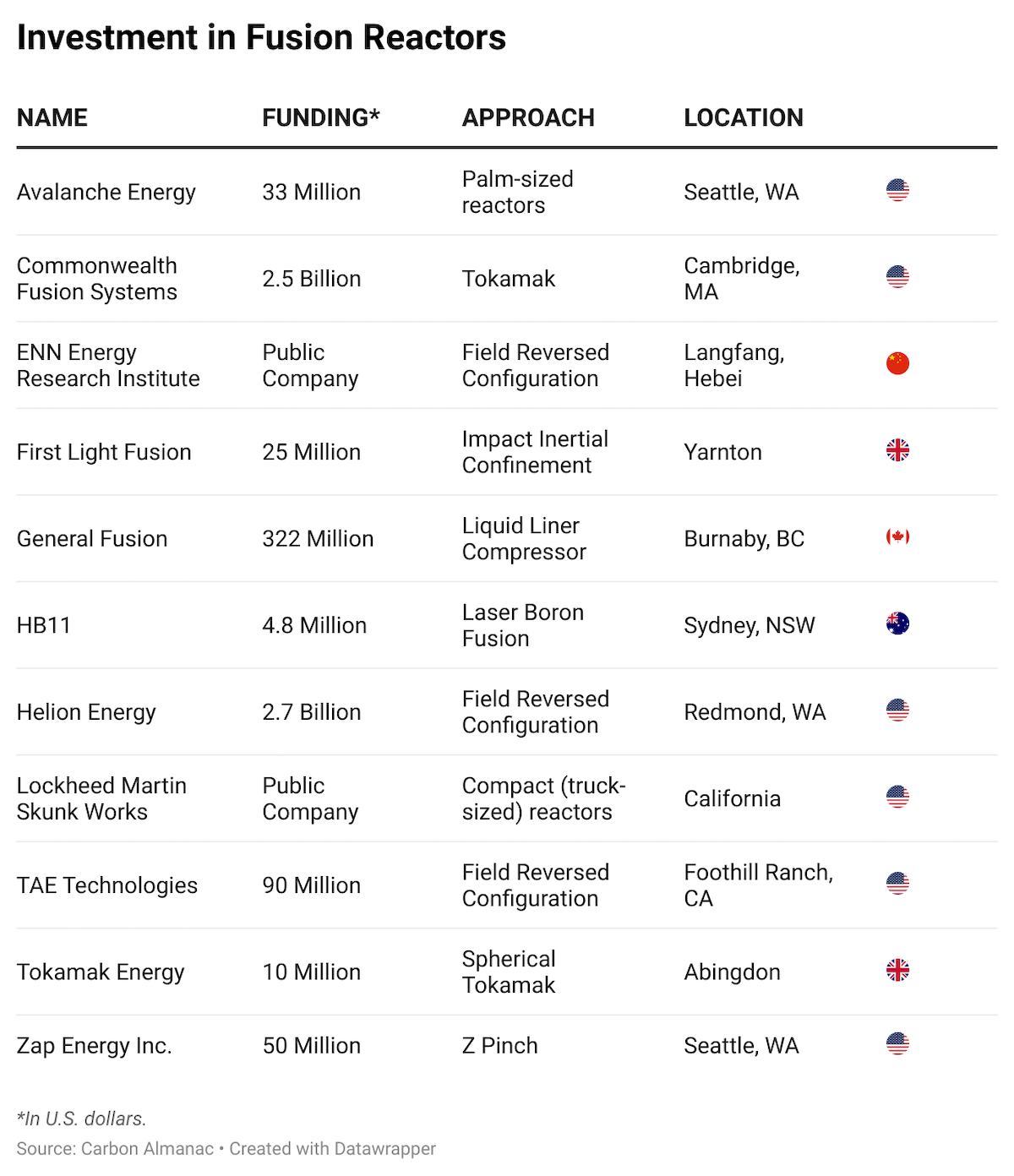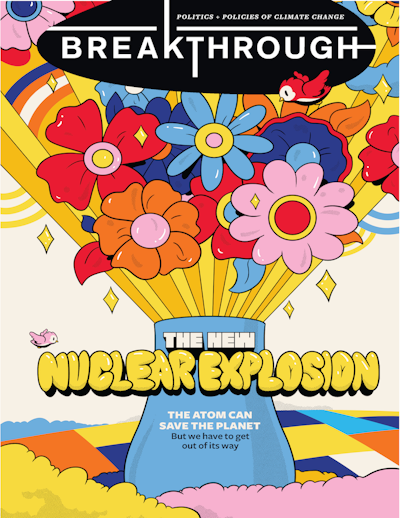It's Not Too Late
How to create the world we want.
-
-
Share
-
Share via Twitter -
Share via Facebook -
Share via Email
-
This is a text about energy.
For more than a hundred years, we’ve had the opportunity to pump energy out of the ground virtually for free. We’ve used that cheap fuel to build the world around us, and we’ve created amazing things, wasted valuable resources, and made a mess while we were at it. At the same time, there is another kind of energy. The energy of hope and connection. The ability that humans have to solve problems and to make things better.
It’s not too late to make a difference.
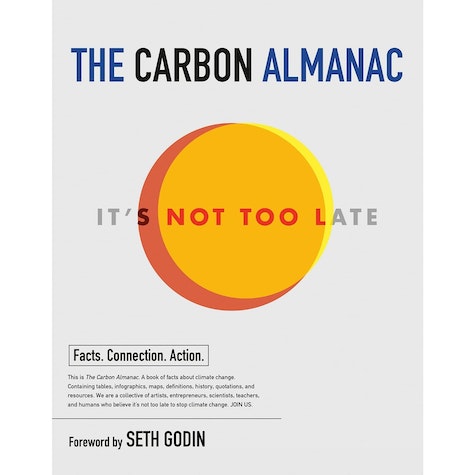
But we’re going to have to hurry. We can’t waste a moment arguing about the size of our problem or mourning what used to be. Instead, we can lean into hope and connection. The hope that comes from realizing that it’s not too late. And the power, nearly unlimited, that comes from coordinated action and community reinforcement. Connected we are far more effective than each of us acting individually.
- Seth Godin
Reprinted with permission from Penguin Random House from The Carbon Almanac: It’s not too late, edited and foreword by Seth Godin (2022).
Nuclear Energy by Fission
Nuclear energy by fission generates about 10 percent of the world’s electricity, representing the second-largest source of low-carbon electricity after hydropower. Because nuclear power plants do not burn fuel, they do not produce greenhouse gas emissions. About 450 nuclear power reactors are in operation worldwide.
Usage of nuclear power varies from country to country. In France, for example, nearly 70 percent of the country’s energy is produced by nuclear power; in Australia, that number is zero.
How fission works
Two types of physical processes produce nuclear energy from atoms: fission and fusion. Fission splits a larger atom into two or more smaller ones, whereas nuclear fusion joins two or more lighter atoms, forming a third, heavier element. Fission is the process most commonly known and referred to as nuclear power.
Nuclear fission splits uranium atoms to generate heat and produce steam, which is then used by a turbine generator to produce electricity. It is among the most effective processes to produce grid-scale quantities of electricity.
Types of fission reactors
All nuclear fission power plants make electricity from steam created by the heat of splitting atoms. But there are two different ways that steam is used.
Pressurized Water Reactors keep water under pressure so it heats but does not boil. Water from the reactor and the water that is turned into steam are in separate pipes and never mix.
In Boiling Water Reactors, the water heated by fission boils and turns into steam to turn the generator. In both types of plants, the steam is turned back into water and can be used again in the process.
How safe are nuclear reactors?
Nuclear accidents are rare, but those that have occurred—at Chernobyl, Three Mile Island, and Fukushima—have had catastrophic consequences. Research on death rates from energy production scores nuclear among the safest, just below renewables such as wind and hydropower.
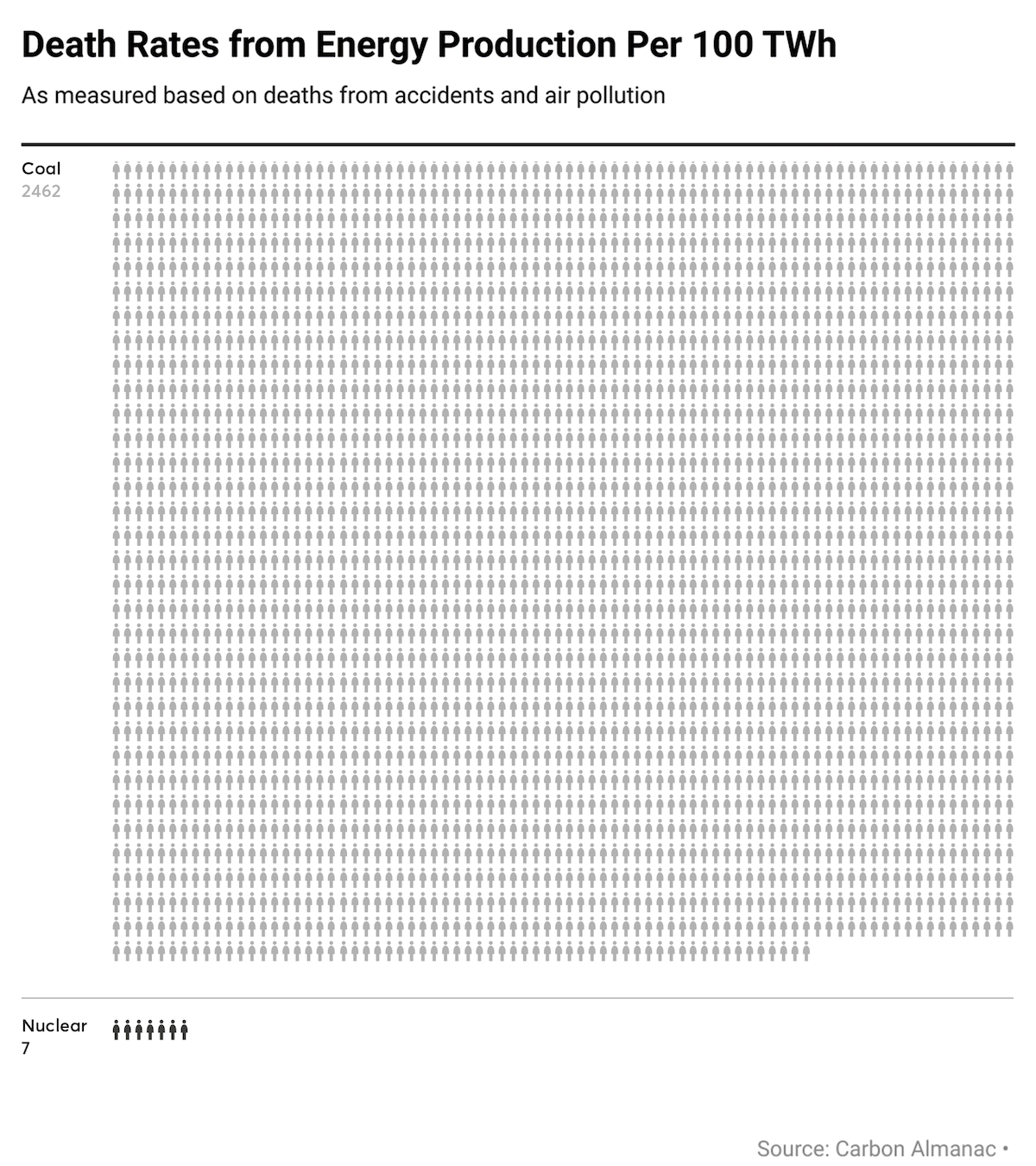
Construction and fuel
Unlike fossil fuel-fired power plants, nuclear reactors do not produce air pollution or carbon dioxide while operating. However, the processes for mining and refining uranium ore and making reactor fuel do require significant amounts of carbon-producing energy.
Nuclear power plant structures and facilities also depend on substantial amounts of metal and concrete for construction, which means significant amounts of energy in the manufacturing process. This contributes a great deal of carbon because concrete is a major contributor to the planet’s carbon load.
Radioactive waste
A major environmental concern related to nuclear power is the creation of radioactive wastes such as uranium mill tailings, spent (used) reactor fuel, plutonium, and other radioactive wastes. The half-lives of the radioisotopes produced are very long—some greater than one million years. Control and management of nuclear waste poses challenges.
The most current method for nuclear waste disposal is storage, using either steel cylinders as a radioactive shield or deep and stable geologic formations. The disposal of nuclear waste by storage is controversial, as the leakage of nuclear waste may cause environmental disasters. These techniques are still under development.
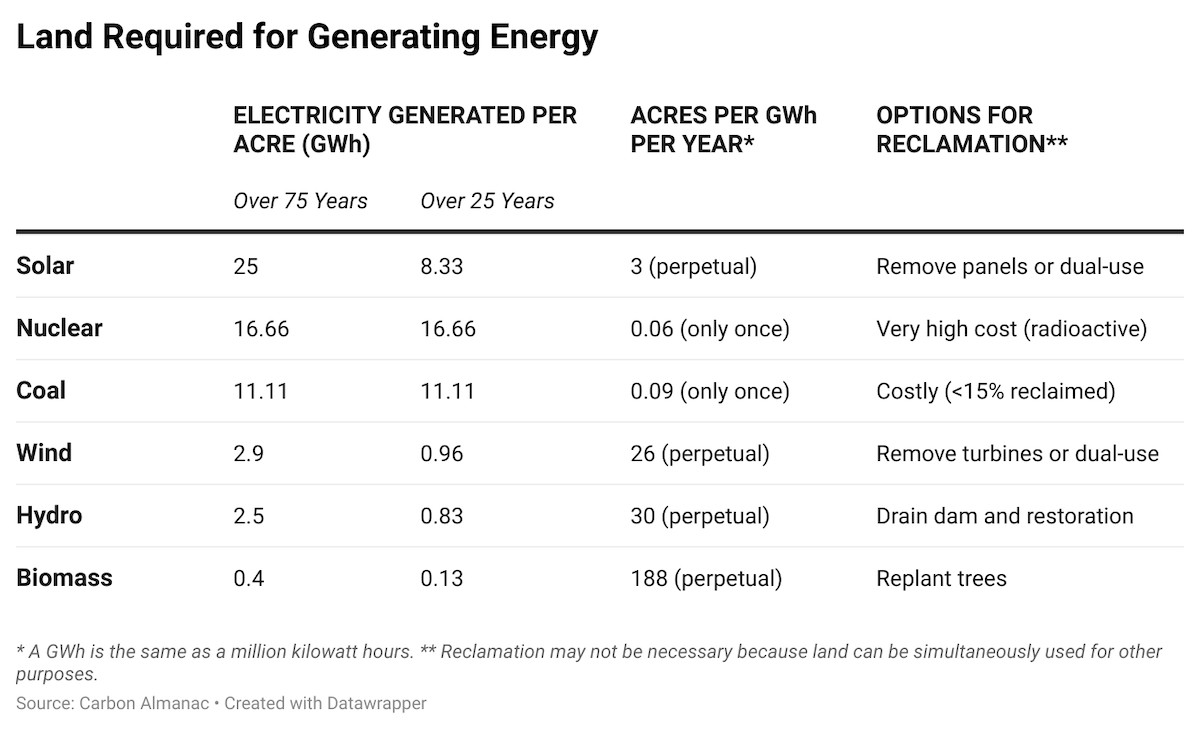
The future of nuclear energy by fission
The future of nuclear power plants is undecided. The world’s approximately 450 nuclear reactors are getting older. With an average usable age of 35 years, one-quarter of all nuclear power plants in developed countries will need to be shut down by 2025.
Following the Fukushima meltdown, a number of countries began to consider phasing out nuclear programs, with Germany expected to shut down its entire nuclear fleet by 2022.
The US has 95 nuclear reactors in operation, but only one new reactor has started up in the last 20 years.
However, more than 100 new nuclear reactors are being planned in other countries, and 300 more are proposed, with China, India, and Russia leading the way. The International Atomic Energy Agency estimates that nuclear energy production will double from 2019 levels of 392 billion watts to 715 billion watts in 2050.
Nuclear Energy by Fusion
Atoms create nuclear energy using two physical processes: fission and fusion. Fission is the process that produces electricity in nuclear power plants across the globe. Fusion is the energy source of the sun and stars, but it’s currently very challenging to contain and manage as usable energy on Earth.
Inspired by the sun
In the 1920s, British physicist Arthur Stanley Eddington was the first to suggest that nuclear fusion powers the universe. Fusion uses hydrogen, the most abundant element in the universe, to generate energy in the form of heat and light. Its waste products are helium and tritium.
Fusion is clean, safe, powerful, and efficient and has been in constant use for about 4 billion years by the sun. The Earth has enough of fusion’s primary fuels—heavy hydrogen and lithium, which are found in seawater—to last 30 million years. If fusion could be harnessed effectively, it could potentially generate endless amounts of pure and waste-free energy.
How fusion works
Unlike fission, which creates energy by splitting atoms apart, fusion occurs when two atoms combine and fuse to form a third, heavier element. In the process, some of the atoms’ mass is converted into a massive output of energy.
Challenges of nuclear fusion
Earth does not have the same intensity of gravity as the sun, so a fusion reactor needs a different way to contain the reaction. A practical fusion reactor would require ten times more heat than found on the sun.
To produce a fusion reaction on Earth, the intense heat and pressure found in the sun’s core needs to be reproduced. This intense heat, as well as internal pressures needed to fuse the atoms, requires sufficient containment to hold and maintain that fusion reaction long enough for a net power gain. As no material is capable of containing such a hot and dense plasma where the fusion reaction is taking place, magnets far more potent than those used in an MRI machine suspend the plasma in a special doughnut-shaped apparatus known as a Tokamak. Unfortunately, a Tokamak is not very efficient at maximizing energy output, and research into more advanced magnetic confinement geometries is a significant area of interest for nuclear physicists.
Ongoing fusion research and development
More than 50 countries are researching nuclear fusion and plasma physics. Fusion reactions have been successfully achieved in many experiments, though none as yet has demonstrated a net power gain.
In southern France, 35 nations are collaborating on project ITER (“The Way” in Latin) to build the world’s largest Tokamak to prove the feasibility of fusion as a large-scale and carbon-free energy source.
ITER holds the possibility of being the first fusion device to produce more energy output than is required to run the reactor and currently holds many records for sustained reactions.
In China, the China Fusion Engineering Test Reactor (CFETR) will be slightly larger than ITER, with a radius of about seven meters. As of 2020, CFETR was in the design and technology prototyping phase with construction to begin later in the decade. Initially, it will demonstrate fusion operation at about 200 MW fusion power and will eventually upgrade to at least 2000 MW of fusion power and 700 MW of net output.
By 2021, investors began embracing the possibility of fusion energy as never before. Here are some firms and the money they’ve raised.
